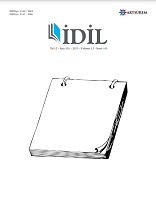MEASUREMENT OF KENAN ÖZTEN’S KANUN LEVERS
MEASUREMENT OF KENAN ÖZTEN’S KANUN LEVERS
Author(s): Serkan Mesut HALİLİ, Tolgahan ÇoğuluSubject(s): Music, Cultural Anthropology / Ethnology, Culture and social structure , History of Art
Published by: Sanat ve Dil Araştırmaları Enstitüsü
Keywords: Turkish music; Kanun; Makam; Kanun Lever Measurement; Microtone;
Summary/Abstract: Kanun is a trapezoidal plucked string instrument that was redesigned in the early 20th century to include levers (mandal) transforming it into an essential Turkish musical instrument. Kanuns made in Turkey are mostly based on 72 equal temperament tuning with 72 equal tones per octave. For measuring the Turkish music pitches, kanun is more suitable than any other Turkish musical instruments because of their fixed lever system. In this article, all kanun levers of prominent luthier Kenan Özten’s kanun have been measured and their average cents have been calculated. The objective of this article is demonstrating the kanun tuning process of Serkan Mesut Halili, calculating the average cent values of one-to-six lever changes and make them available for calculating the microtones of makam flavors. In Turkish music, makams are made of trichords, tetrachords and pentachords. Makams cannot be defined by scales. The main characteristic of the makams are their melodic progressions (seyir) and the flavors they use. Therefore, calculating the cent values of these flavors is a way to describe the exact values of microtones in makams. According to the measurements found in the research, one lever flattens the string by 17 cents, two levers by 35 cents, three levers by 51 cents, four levers by 69 cents, five levers by 85 cents and six levers by 100 cents which is a semitone. For the measurements, the advanced tuning software “Clear Tune” was used.
Journal: İdil Sanat ve Dil Dergisi
- Issue Year: 12/2023
- Issue No: 101
- Page Range: 36-42
- Page Count: 7
- Language: English

